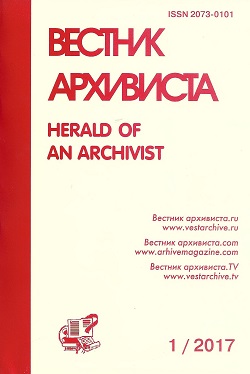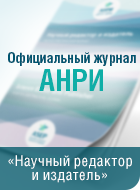Nomadic Inorodtsy of the South of Russia: Perception in the 19th Century in the Context of “Managers” and “Managed”



Scientific article
УДК 94(470)+35.08
DOI 10.28995/2073-0101-2021-3-687-698
Irina V. Lidzhieva
Federal Research Centre “The Southern Scientific Centre” of the Russian Academy of Sciences, Rostov-on-Don, Russian Federation
Nomadic Inorodtsy of the South of Russia: Perception in the 19th Century in the Context of “Managers” and “Managed”
Abstract
The South of the Russian Empire in the 19th century remained an imperial outskirt in its integration process, yet uncompleted. The article is to study the perception of the inorodtsy (non-Russian) directorates officials and the governed population in the steppes of the Precaucasia and in the Lower Volga region in the 19th century on the example of the Directorate for the Kalmyk people of the Astrakhan gubernia and the Directorate for nomadic peoples of the Stavropol gubernia. Despite long-held interest of the Russian historiography in the problems of imperial bureaucracy, the human capital of management apparatus in the regional outskirts remains outside the focus of researchers’ attention. Issues of the discourse managers/managed are important for study, since their mutual perception affected the achievement of the main goal of the state, which was to integrate the imperial outskirts into the Russian space, and as its many aspects remain relevant even at the present stage. The sources are materials from the fonds of the State Archive of the Stavropol Krai (GASK) and the National Archive of the Republic of Kalmykia (NARK), containing personal data of civil servants and office documentation. The concept of “management” is considered as a process during which the subject of management, that is, managers (in this case officials of the inorodtsy directorates), affects the object of management — managed — nomadic peoples. Using comprehensive methods of content analysis of archival sources texts and reconstruction of events in chronological sequence, the main directions of interaction between the managers and the managed have been determined. The author concludes that the process of mutual perception of the managers and the managed on the inorodtsy outskirts of the empire was one of significant aspects in the context of formation of the mechanism for their integration into the all-Russian socio-economic and political-legal space, which showcases the political course of the central authorities in relation to the local population. In the course of direct interaction between the two, both positive and negative directions were developed, the latter, to the extent possible, were alleviated by the higher regional management, who, unlike middle-level officials, were fully aware of the goals and tasks of the inorodtsy directorates.
Keywords
Mutual perception, inorodtsy, nomadic peoples, imperial officials, integration of the Russian periphery, regional outskirts of the Russian empire.
Download the article: lidzhieva_doi
References
IZBASAROVA, G.B. Institut popechitelei v Kazakhskoi stepi XIX v.: pravovoe polozhenie i dolzhnostnye instruktsii [The institute of trustees in the Kazakh Steppe in the 19th century: Legal status and official instructions. In Russ]. IN: Bylye gody, 2017, no. 46, pp. 1366-1375.
LANKO, P. Z. Otryvki iz zapisok o kalmykakh Bol'shederbetovskogo ulusa [Excerpts from notes on the Kalmyks of the Bolshederbetovsky ulus. In Russ.] IN: Sbornik statisticheskikh svedenii o Stavropol'skoi gubernii [Collection of statistical information on the Stavropol gubernia. In Russ.]. Stavropol, 1868, pp. 73-82.
TREPAVLOV, V. V. Diplomatiya vzaimnogo uznavaniya: obshchenie administratsii i “inorodtsev” v vostochnykh regionakh Rossii [A diplomacy of mutual recognition: Communication between local authorities and non-Slavic population in the Eastern regions of Russia. In Russ.]. IN: Rossiiskaya istoriya, 2018, no. 2, pp. 3-12.
CHONOV, E. Ch. Zemstvo vo Vnutrennei Kirgizskoi Orde i Kalmytskoi Stepi, Astrakhanskoi gubernii, i u inorodtsev Stavropol'skoi gubernii [Zemstvo in the Inner Kirghiz Horde and Kalmyk Steppe, the Astrakhan gubernia, and among the inorodtsy of the Stavropol gubernia. In Russ.]. Petrograd, 1917, 18 p.
KHARA-DAVAN, E. Kalmytskie studenty-pionery [Kalmyk student- pioneers. In Russ.]. Elista, 2012, 350 p.
About the authors
Lidzhieva Irina Vladimirovna, PhD in History, Federal Research Centre “The Southern Scientific Centre” of the Russian Academy of Sciences, laboratory of history and ethnography, leading researcher, Rostov-on-Don, Russian Federation, +7-961-546-97-77, This e-mail address is being protected from spambots. You need JavaScript enabled to view it
Grant information
The publication has been prepared within frameworks of implementation of the state task of the Federal Research Centre “The Southern Scientific Centre” of The Russian Academy Of Sciences, project no. AAAA-A19-119011190182-8.
Submitted 25.08.2020, published (for citation):
LIDZHIEVA, I. V. Kochevye inorodtsy Yuga Rossii: vospriyatie v kontekste “upravlentsy” – “upravlyaemye” v XIX veke [Nomadic Inorodtsy of the South of Russia: Perception in the 19th Century in the Context of “Managers” and “Managed”. In Russ.]. IN: Vestnik arhivista / Herald of an Archivist, 2021, no. 3, pp. 687-698. doi 10.28995/2073-0101-2021-3-687-698











